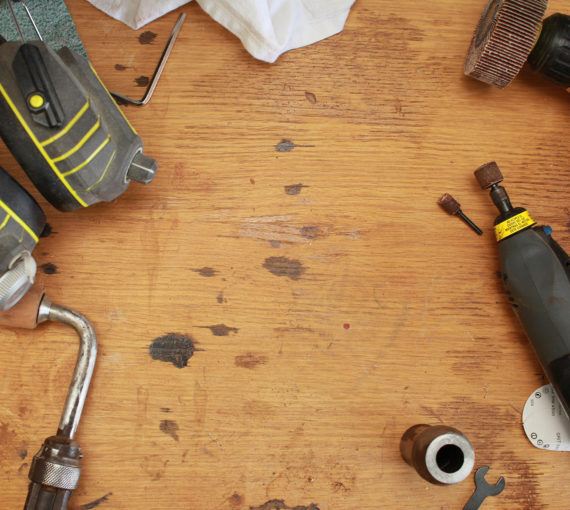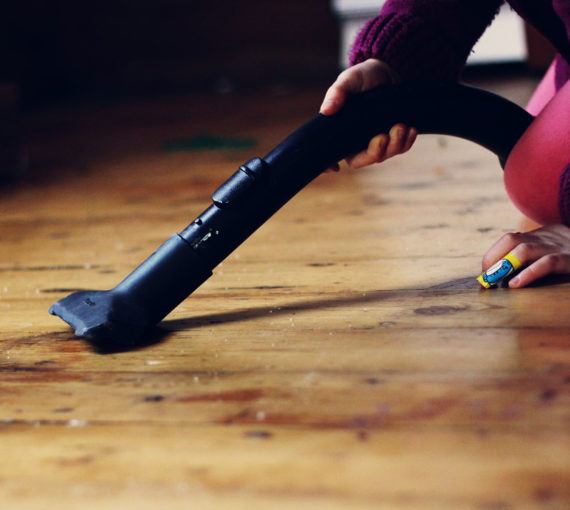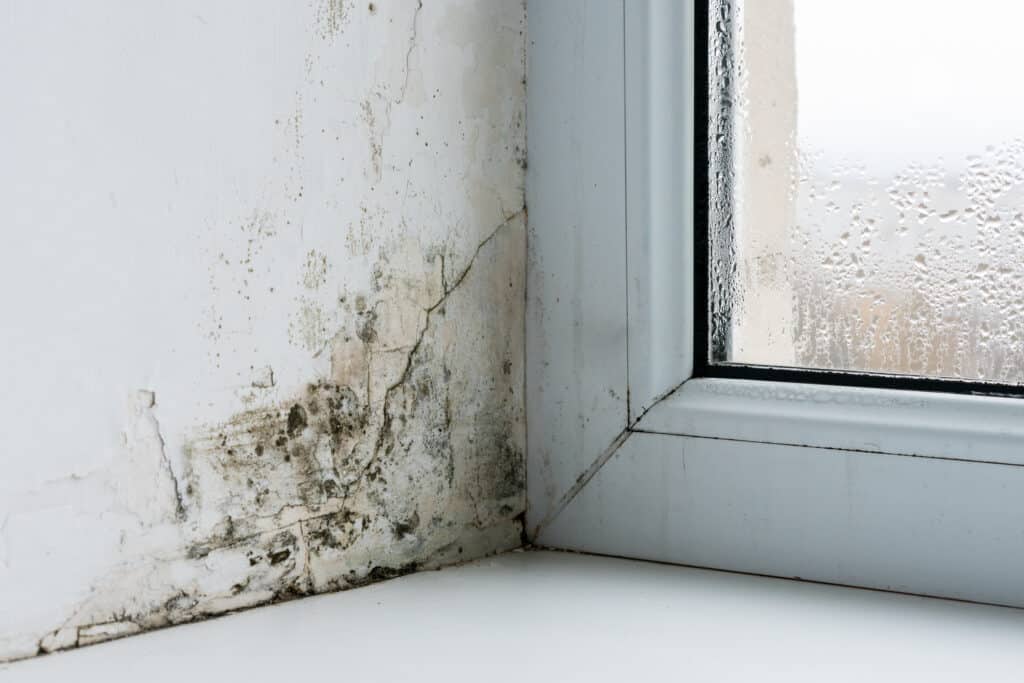
Mould, a common household contaminant, can trigger allergic reactions and respiratory problems in some individuals.
Got asthma, allergies, headaches or a chronic cough? Your home might be making you sick! People spend an average of 75 per cent of their time at home. Staying well needs a healthy living environment.
Learn how to identify and limit your exposure to eight common household pollutants and contaminants: mould, radon gas, volatile organic compounds, flame retardants, combustibles, plasticizers, pesticides and asbestos.
1. Mould
Mould can be a dangerous household contaminant. Its tiny spores can become airborne and inhaled. They contain mycotoxins and allergens that can trigger allergic reactions and respiratory problems in some people. Young children, the elderly and people with asthma, allergies and/or compromised immune systems are particularly vulnerable. Chronic exposure can lead to long-term health problems such as invasive mould infections, toxicity and immune dysfunction.
Mould can also cause building structural damage. It thrives on a variety of surfaces, including wood, drywall, insulation and fabrics. Without treatment, this can lead to decay and deterioration of the materials over time.
How to spot mould
Mould thrives and multiplies in humidity. Look for black or green mould spores, stains or discolorations, and furry or slimy textures on walls and surfaces. Mould is not always easy to detect. It can also grow inside walls, between tile grout, above false ceilings, behind wallpaper and under carpets and furniture. A musty odour may indicate hidden mould growth.
How to prevent mould
- Maintain indoor humidity levels below 50 per cent to discourage mould growth. Use a dehumidifier in moisture-prone spaces (e.g., kitchen, bathroom, basement, etc.).
- Ensure proper ventilation in moisture-prone areas. Use exhaust fans. Open vents, windows and doors between rooms or to the outdoors when possible. (When heating or cooling systems are on, don’t waste energy by opening exterior vents, windows and doors.)
- Waterproof sinks and bathtubs to avoid leaks into walls.
- Fix all roof, plumbing or wall leaks.
- Improve insulation. This can help prevent condensation buildup, reducing the risk of mould growth.
- Consult a specialist if the problem persists.
Eco-friendly cleaning solutions to treat mould
Make DIY mould-busters using environmentally friendly ingredients you may already have!
- Distilled white vinegar’s mild acidic nature is effective in treating more than 80 per cent of mould species. It’s also eco-friendly and non-toxic. Pour some into a spray bottle. Spray directly onto mould. Do not rinse or scrub. Let it soak for at least an hour. Scrub and wipe clean.
- Mix baking soda with water to create a paste. Apply it to the mouldy surface, scrub gently and rinse.
- Pour three per cent hydrogen peroxide solution into a spray bottle. Spray directly onto the mouldy surface. Let it sit for 10 minutes. Scrub and rinse. On non-porous material, dilute hydrogen peroxide with equal amounts of water. Wash the mixture off the surface with warm, soapy water. Rinse and dry.
- Mix two teaspoons of tea tree oil with two cups of water or distilled white vinegar. Spray directly onto the mouldy surface. Let soak for an hour. Scrub and wipe clean.
- Mix a few drops of citrus seed extract, such as grapefruit seed extract, with one cup of water. Pour into a spray bottle. Spray directly onto the mouldy surface. Let soak for a few hours. Scrub and wipe clean.
Repeat all cleaning solutions as needed. If mould persists, consult a specialist.

Be sensitive to those with environmental sensitivities
Environmental sensitivity is a medical condition. It can result from exposure to — or poisoning by — contaminants and pollutants such as mould, pesticides, solvents and other harmful chemicals. Fragrances can be debilitating for those who suffer.
Learn more about environmental sensitivities and their triggers
2. Radon gas
Radon gas exposure is the number one cause of lung cancer in non-smokers. The breakdown of uranium in soil and rock creates this radioactive, colourless, tasteless, odourless gas. Radon is not a threat to human health when released from the ground into outdoor air. But at high levels in enclosed spaces, it’s dangerous.
Early symptoms of exposure may include shortness of breath, persistent cough, tightness or pain in the chest, hoarseness and/or trouble swallowing. But you can still be vulnerable before presenting any symptoms.
A difference in the air pressure between a building and soil surrounding its foundation may draw radon gas indoors. It “can enter a home any place it finds an opening where the house contacts the ground: cracks in foundation floor and walls, construction joints, gaps around service pipes, support posts, window casements, floor drains, sumps or cavities inside walls.”
How to know if your home has radon gas
Find out if you live in an area prone to high radon levels.
If you do, conduct a home radon test, ideally during winter months, when indoor concentrations can be highest. See if a radon monitor lending program is available in your area. If not, you can buy home radon test kits at most hardware stores and online.
What to do if radon gas is in your home
- Ensure good ventilation, especially in basements and crawl spaces. Proper airflow can help dilute radon gas.
- Check for cracks and other openings in the basement slab, where radon gas might be entering. Seal them.
How to prevent radon gas buildup
- Install a radon mitigation system that vents radon gas outside. If you’re building a new home, install a passive sub-slab depressurization system.
- Avoid building an attached garage. If you have one, insulate it well.
- Maintain heating appliances and smoke ducts.
- Replace an ornamental, wood-burning or gas fireplace with an electric one.
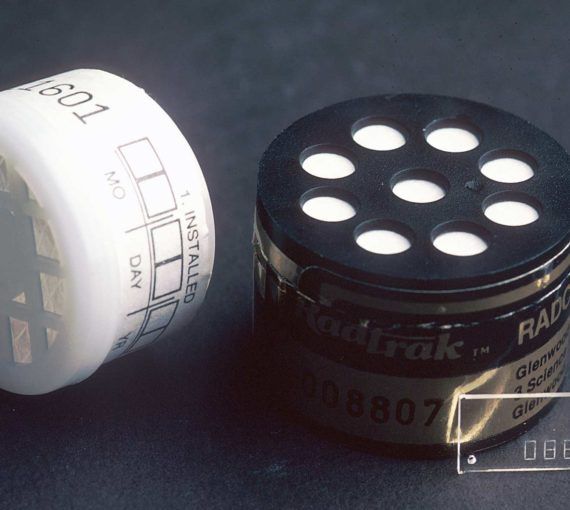
Testing your home for radon could be a lifesaver
A test kit can help determine if your home’s radon concentration exceeds the Canadian guideline level. It could save your life!
3. Volatile organic compounds
VOCs evaporate readily and end up in the air. Sources include construction materials, glues, varnishes and solvents, pesticides, new furniture, cleaners and disinfectants, cosmetics, mattresses and box springs, moth repellents, air fresheners, textiles and paint. Some volatize quickly (e.g., paint) while others (e.g., furniture) may emit VOCs for years.
Adverse health effects of VOCs include eye, nose and throat irritation, headaches, nausea, damage to kidney, liver and central nervous system, even cancer — depending on the chemical.
How to limit VOC exposure
- Use VOC-specific air purifiers. They often have activated carbon filters to help capture and remove VOCs from the air.
- Ensure good ventilation. Use exhaust vans and open vents, windows and doors to improve air circulation. Ventilate during and after activities that release VOCs (e.g., painting or cleaning).
- Choose paints, varnishes and adhesives labelled “low-VOC” or “VOC-free.”
- Use environmentally friendly and non-toxic cleaning products. Make your own!
- Avoid aerosol sprays, such as air fresheners and deodorants.
- Limit new furniture. Particleboard and pressed wood products are especially prone to releasing VOCs. Allow new furniture to off-gas in a well-ventilated area before bringing it into your living space.
- Store household chemicals, paints and solvents in a well-ventilated area.
- Choose eco-friendly pillows and mattresses.

How to dispose of household hazardous waste
Hazardous waste is unwanted materials or products that can cause illness or death for people, plants and animals. Correct disposal is important to prevent the spread of chemicals in soil, air and water.
4. Flame retardants
All furniture and electronics and many building materials — from mattresses and upholstered items to electronic devices and children’s toys — contain these chemical compounds.
They’re harmful to human health and the environment. They leach chemicals into the air, water and soil. They don’t break down easily and can remain in the environment and bodies for years. They can cause adverse health effects such as endocrine and thyroid disruption, immunotoxicity, reproductive toxicity, cancer and negative impacts on fetal and child neurodevelopment.
How to limit flame retardant exposure
- Opt for flame retardant–free materials, such as wool, cotton and jute.
- Check labels. Avoid upholstered furniture and cushions if you don’t know the materials used in production. Look for “CONTAINS NO ADDED FLAME RETARDANTS.”
- Avoid children’s products made with polyurethane foam.
- Avoid contact with decaying or crumbling foam from older automotive seats, carpet padding, upholstered furniture and foam mattress pads.
- Wash children’s toys to minimize chemical ingestion.
- Replace couches, stuffed chairs and vehicle seats with exposed foam. Or cover them with a sturdy cloth and vacuum around them frequently.
- Vacuum instead of sweeping. Vacuuming with a HEPA filter can capture toxic particles and retain them. Sweeping pushes particles back into the air.
- Choose eco-friendly pillows and mattresses.

Clean up dust to reduce indoor exposure to harmful chemicals
Household dust is one of the most significant sources of childhood exposure to toxic substances.
5. Combustibles
Carbon monoxide (CO) and nitrogen dioxide (NO2) are colourless, odourless, tasteless gases. They’re emitted by incomplete combustion from sources such as vehicle exhaust, coal and wood burning, natural gas stoves, butane, propane and tobacco smoke.
Both are harmful pollutants that can have adverse health effects when inhaled. They are powerful irritants and can replace the oxygen in your blood and cause poisoning. Chronic exposure can cause respiratory problems, nausea, loss of consciousness — even death.
How to limit combustibles exposure
- Avoid building an attached garage. If you have one, insulate it well.
- Install CO detectors on each floor of your home.
- Maintain heating appliances and smoke ducts.
- Replace a gas stove with an induction stove or cooktop. Or install a hood fan in the kitchen.
- Replace an ornamental, wood-burning or gas fireplace with an electric one.
- Avoid smoking indoors.
6. Plasticizers
Plasticizers are chemical additives integrated into plastic or rubber to make them more flexible and pliable. Polyvinyl chloride (PVC), bisphenol A (BPA), phthalates, polystyrene, polyurethanes and polyethylene are examples. They’re found everywhere: in plastic bottles, cookware, carpets, electronics, building materials, shower curtains, wallpaper, carpets and linen. They’re hard to avoid.
Plasticizers are among the most widespread environmental toxins. They leach out of plastic materials over time, particularly when exposed to heat, moisture or abrasion. They can enter the body through ingestion. They can cause environmental contamination when they enter soil, water and ecosystems.
Plasticizers are also biopersistent. Once leached into the environment, they can bioaccumulate in the food web. They also accumulate in bodies and can cause reproductive and neurological harm, respiratory and allergic reactions and increased risk of cancer.
How to limit plasticizers exposure
- Avoid epoxy-based glues, paints and finishes, PVC plastic items and malleable plastic products.
- Choose products labelled “phthalate-free” or “PVC-free.”
- Avoid microwaving or heating food in/on plastic dishes. Always use glass or ceramic.
- Use eco-friendly kitchen tools. Opt for glass, ceramic, wood, bamboo, aluminum, stainless steel, silicone and cloth products instead of plastic.
- Reduce plastic food packaging, such as wrap and disposable containers. Use reusable beeswax or soy wax–coated food wrap instead.

Avoid toxic chemicals
Accumulation of toxic chemicals inhaled, ingested and absorbed through skin every day is called “body burden.” Follow these simple ABCs to unburden yourself, your family and your home.
7. Pesticides
The most common ways pesticides enter homes is through residue on produce, insecticides, herbicides and fungicides on home gardens, contaminated houseplant soil and stored pesticide containers.
The movement of pesticide vapours through the air is called “pesticide volatilization.” The three main sources are volatile agricultural pesticides (e.g., fumigants), semi-volatile agricultural pesticides and pesticides for indoor pest control. These fine, airborne particles can make their way into homes through dust collected on shoes, dust mites and pets.
The serious long-term adverse effects of pesticide exposure has been called a “silent pandemic.” Evidence shows a causal relationship between pesticide exposure and Parkinson’s Disease and an increased risk of fetuses and children developing autism. Prolonged exposure to volatile pesticide particles can also cause headaches, irritation, allergies, fetal harm, hormone disruption and immune system weakening. The impacts of pesticides and volatile pesticide particles on the environment include harming non-target species and polluting the air.
How to limit pesticide exposure
- Ensure good home ventilation.
- Keep pets clean. They can bring in dust, dirt and allergens.
- Avoid lawn and garden chemicals. They kill some pollinators, harm others and are bad for humans.
- Leave shoes and boots in an enclosed space at the entrance of your home.
- Clean bedding, carpets and other fabrics regularly.
- Ditch chemicals and use eco-friendly methods to get rid of “pests” in your space.
- Choose organic produce or wash fruits and veggies to remove pesticide residue.
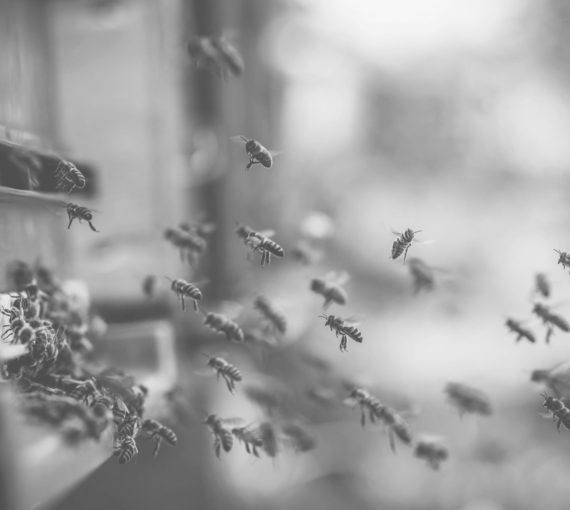
Canada must ban neonics
Neonicotinoid pesticides, also known as “neonics,” are the most widely used insecticides in the world. Primarily used to control pests on agricultural crops like corn and soy, they’re also found on Christmas trees, houseplants and more.
8. Asbestos
Asbestos is a group of naturally occurring minerals composed of long, thin, microscopic fibres. Once highly valued for its fire-resistant, insulating and durable properties, it was widely used in construction, manufacturing and various industrial processes and products, including brake pads, pot and pan handles, home insulation and more.
Canada prohibits manufacturing, importing, selling and using products containing asbestos — a victory won by health specialists and environmental groups such as ours! But it can still be found in older building materials (especially if your home was built before 2005) and automotive parts.
Inhalation and exposure to asbestos can lead to serious health problems such as respiratory disease, mesothelioma, lung cancer, gastrointestinal cancer and asbestos-related diseases like pleural plaques and effusion.
How to know if you’re exposed to asbestos
Asbestos-related illnesses and diseases often have long latency periods. Symptoms may not be apparent until many years after exposure. If you believe you’ve been exposed, be vigilant about your health and seek medical attention as needed. Early detection and intervention can improve the prognosis and treatment options.
If you live in an older home or work in an older building, identify potential asbestos-containing materials (e.g., insulation, roofing, flooring, siding, etc.) and hire a professional asbestos inspector to assess.
How to limit asbestos exposure
- Leave asbestos-containing materials undisturbed until they can be removed by professionals.
- Avoid drilling, cutting, sanding or otherwise disturbing these materials, which can release asbestos fibres. Never try to remove asbestos-containing materials yourself.
- Be cautious when planning renovations or remodelling projects in older homes or buildings. Consult a professional to assess the presence of asbestos and take necessary precautions.
